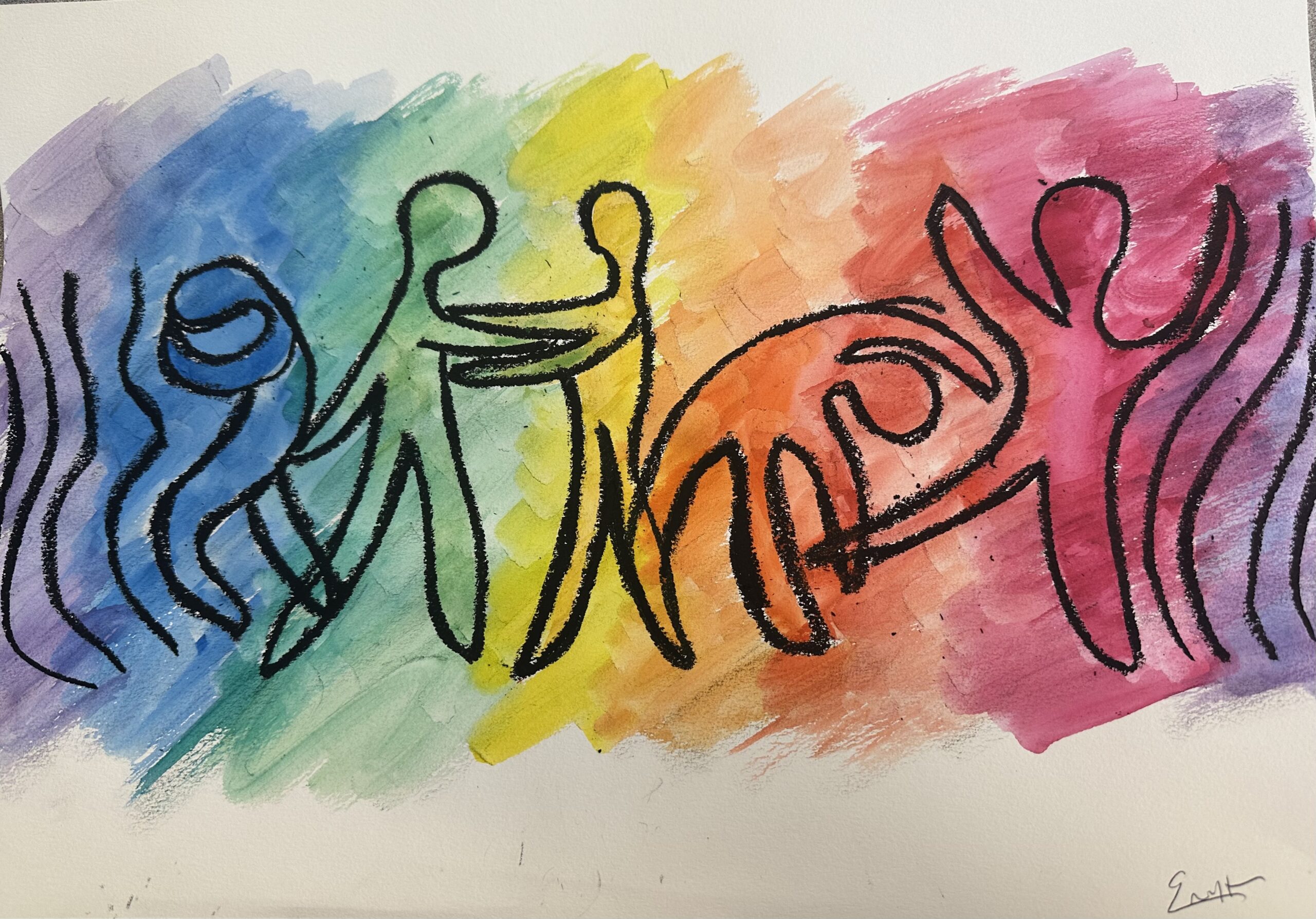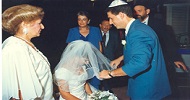The couple is seated in facing chairs. Once they are seated, a tallit or other fabric barrier is held up between them, and they are instructed to close their eyes and prepare to look on the face of the beloved. A grounding exercise may be useful: feeling the connection of their feet to the floor, their “sit bones” to the chair, focusing on breath.
Reader:
For all the lessons that life has taught me; for all the good times and all the hard times that have shaped me; for all the happiness and all the trials that are yet to come; and for the magnificent blessing of this present moment, I offer my gratitude before the Eternal One:
Modeh/Modah Ani lefanekha/lifanayikh *
For the gift of the body, the senses, the heart and the mind, for these mechanisms of my soul, I offer my gratitude before the Eternal One:
Modeh/Modah Ani lefanekha/lifanayikh *
For the sight of the Beloved, the light of my eyes, my chosen companion on the road ahead, I prepare myself with open heart and open hands. In joy and humility I offer my gratitude before the Eternal One:
Modeh/Modah Ani lefanekha/lifanayikh *
(Remove the barrier, and look at each other)
Et dodim kallah, bo’i le gani: Oh, my bride, it is the time for lovers, come into my garden
Parkha ha gefen, heynetzu ha rimonim: The vine has blossomed; the pomegranates are in bud
Et simkha ve et ahavah, bo’i le gani: The time for joy, the time for love, come into my garden.
* This chant, created and taught by Rabbi Shefa Gold, forms the core of a gratitude meditation:
the chant is sounded in sets of three. The first and third times, I say “l’fanekha;” The second I say “lifanayikh.”
The first: bowing to the left side, bring to awareness the gifts and obstacles in your past—in grateful awareness that both have shaped you and brought you here.
The second: bowing to the right side, offer thanks for that which is yet to come—in recognition that some of it will be hard, and offer gratitude for the coming lessons.
The third: bowing forward from the waist, gratefully enter and receive the present moment.












